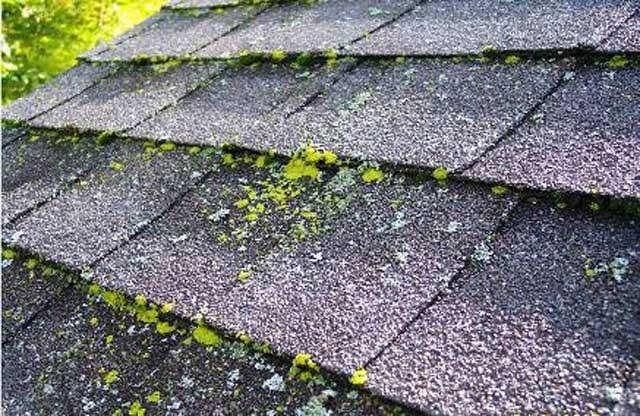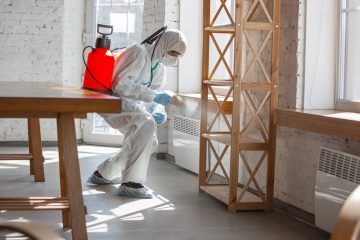Your roof plays a crucial role in protecting your home from the elements, but like all parts of your home, it has a lifespan. Over time, exposure to weather, wear and tear, and other factors can take a toll, leading to the need for repair or replacement. But how do you know when it’s time to stop patching and start planning for a full roof replacement?
In this guide, we’ll explore the signs that indicate it’s time to consider replacing your roof, the process involved, and why regular roof inspections are key to maintaining a healthy roof.
1. Assess the Age of Your Roof
The age of your roof is one of the biggest indicators of whether you should consider replacement. Most roofing materials have a specific lifespan, and as they reach the end of their expected duration, the roof becomes more vulnerable to issues like leaks and structural damage.
Typical Lifespans of Roofing Materials
- Asphalt shingles: 20-25 years
- Wood shingles: 20-30 years
- Metal roofs: 40-70 years
- Clay or concrete tiles: 50+ years
If your roof is approaching the upper limit of its lifespan, it may be more cost-effective to opt for a roof replacement rather than investing in frequent repairs. Keep in mind that factors like weather conditions, the quality of installation, and the materials used can all impact the longevity of your roof.
2. Signs of Roof Damage: When Repairs Aren’t Enough
In some cases, a roof inspection may reveal that a simple repair will suffice. However, there are certain signs of damage that suggest it’s time to consider a full roof replacement. If you notice any of the following issues, it’s a good idea to call in a professional roofing company, like Coons Roofing, to assess the situation and help you decide whether repairs or replacement are necessary.
1. Curled, Cracked, or Missing Shingles
Shingles are your roof’s first line of defense, and when they start to show visible signs of wear, it’s a clear indication that your roof is aging. Shingles that are curled or cracked can no longer provide adequate protection against rain, wind, and other elements. Missing shingles leave vulnerable spots, increasing the risk of leaks. While a few damaged shingles can be replaced, widespread issues often indicate the need for a new roof.
2. Water Damage or Leaks
Water stains on your ceiling or walls are a red flag for roof damage. Leaks typically result from broken shingles, damaged flashing, or other issues that allow water to seep into your home. If left unchecked, water damage can lead to mold growth, structural issues, and more costly repairs down the line. Frequent leaks or extensive water damage are often signs that it’s time for a roof replacement.
3. Sagging Roof Deck
A sagging roof deck is a more serious sign that structural damage may have occurred. This issue often results from prolonged water damage, and it poses a risk to your home’s overall structural integrity. If you notice your roof sagging or uneven, you should contact a professional immediately, as it may be time for a complete roof replacement.
4. Granules in Gutters
If you notice an excessive amount of granules from asphalt shingles accumulating in your gutters, it’s a sign that your roof is nearing the end of its life. These granules protect the shingles from the sun’s UV rays, and once they begin to wear away, the shingles become more susceptible to damage. Regularly checking your gutters for granules can help you catch this issue early.
3. The Role of Regular Roof Inspections
One of the best ways to stay ahead of roofing issues is through regular roof inspections. Professional inspections allow roofing experts to identify potential problems before they escalate, saving you money on repairs or replacement in the long run.
Why Roof Inspections Matter
- Early Detection of Issues: Roof inspections catch small problems before they become bigger, more expensive issues. For example, minor leaks or damaged flashing can be addressed early, preventing extensive water damage to your home’s structure.
- Extending Roof Lifespan: Regular maintenance and inspections help extend the lifespan of your roof by addressing wear and tear as it occurs, rather than allowing damage to accumulate.
- Safety Assurance: A professional roof inspection ensures that your roof is structurally sound and safe, giving you peace of mind, especially in extreme weather conditions.
By scheduling regular roof inspections with a trusted roofing company like Coons Roofing, you can make informed decisions about when a roof replacement is necessary and avoid costly surprises.
4. The Roof Replacement Process: What to Expect
Once you’ve determined that a roof replacement is necessary, understanding the process can help reduce any stress or uncertainty. While every project is unique, most replacements follow a similar structure:
1. Initial Inspection and Estimate
A professional roofer will first conduct a thorough inspection to assess the condition of your current roof and recommend the best options for replacement. This initial inspection helps identify any structural issues that may need to be addressed before installing the new roof. Recognizing the signs of roof deterioration, such as missing shingles, persistent leaks, or sagging areas, is crucial for timely replacement. Consulting an experienced roofer ensures a thorough evaluation and professional advice on whether repair or replacement is the best option. Their expertise can help safeguard your home against further damage while improving the overall durability and appearance of your roof.
2. Choosing Roofing Materials
When replacing a roof, homeowners have the opportunity to choose new materials that suit their style and needs. Asphalt shingles remain the most popular choice for their affordability and durability, but metal roofs, clay tiles, and other options are available, depending on your aesthetic preferences and budget.
3. Removing the Old Roof
Before the new roof can be installed, the old roof must be removed. This involves stripping away the shingles, underlayment, and other components down to the roof deck. In some cases, repairs may be necessary to the deck itself if damage has occurred over time.
4. Installing the New Roof
Once the old roof is removed and any repairs have been made, the new roofing materials are installed. This process typically takes a few days, depending on the size of your home and the complexity of the project.
5. When Roof Replacement Makes Financial Sense
While roof repairs can solve many problems in the short term, ongoing maintenance costs can add up over time. If you find yourself frequently paying for repairs, it may be more cost-effective to invest in a roof replacement. A new roof not only enhances the safety and comfort of your home but also adds to its overall value.
The Long-Term Benefits of Roof Replacement
- Energy Efficiency: New roofing materials often provide better insulation, which can lead to lower energy bills and a more comfortable home.
- Increased Property Value: A new roof is an attractive feature for potential buyers and can increase the resale value of your home.
- Enhanced Curb Appeal: A new roof can transform the look of your home, boosting its curb appeal and giving it a fresh, modern appearance.
By working with a reliable roofing company like Coons Roofing, you can ensure that your roof replacement is handled professionally and that you’re making a sound investment in your home.
Conclusion: Knowing When It’s Time for a Roof Replacement
Recognizing the signs that it’s time for a roof replacement is key to maintaining the safety, energy efficiency, and value of your home. From inspecting shingles and addressing leaks to investing in regular roof inspections, staying proactive can save you from costly repairs and unexpected issues down the line.
If you’re unsure whether your roof needs a replacement or just a few repairs, it’s always best to consult with a professional roofing company like Coons Roofing. By scheduling an inspection, you’ll get expert guidance on the best course of action for your home.


